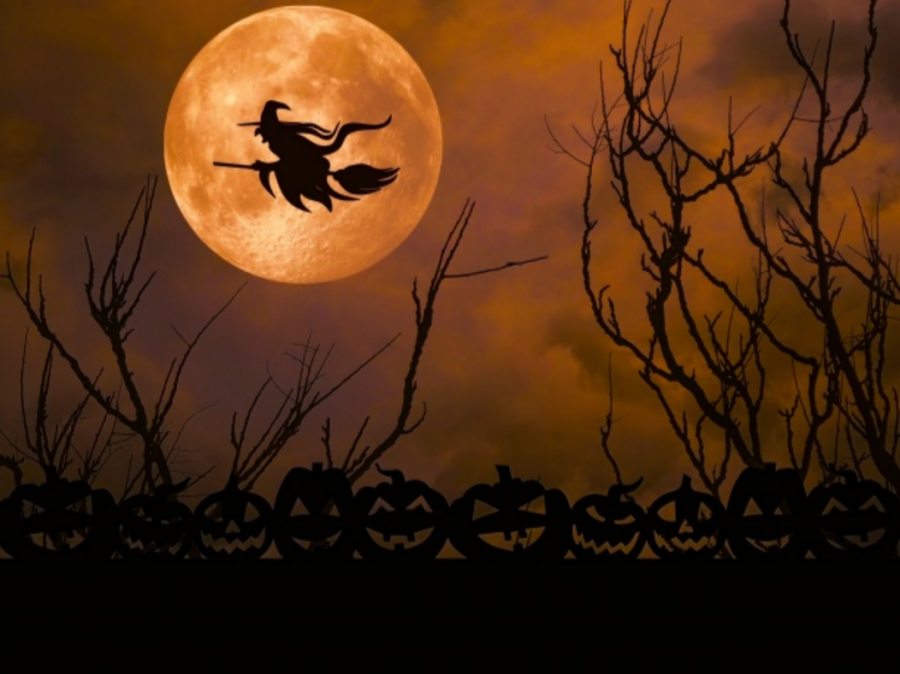The Enduring Power of the Witch
This article was originally published on November 5, 2021.
When I was younger, October was about carving pumpkins and eating candy, but recently, I’ve noticed a force outshining all the rest: the witch. With the passing of Halloween, you might think her time has come to an end. However, she needn’t pack up her broomstick just yet, as it is always the season of the witch. Essentially, the denigration of this trope represents society’s convoluted notions surrounding female power and individuality. These portrayals remain prevalent within all forms of entertainment and greatly affect society’s treatment of women in modern-day society.
The traditional idea of the witch stems back to 900 BCE. While its specific origins remain unclear, it became a prominent aspect of the 16th century. As the Reformation swept across Europe, Catholic and Protestant churches promoted witch hunts to gain followers. The events of this era directly influenced the social customs of the future. In fact, our modern interpretation of the witch originated from female domination of the 16th-century beer industry. Brewers of the period fermented alcohol in cauldrons and wore pointed hats to stand out in large crowds. However, the fear of witchcraft brought about by the Reformation promptly excluded women from this growing industry. Men often accused the brewers of stewing potions to manipulate the minds and souls of their customers. Fueling the fire of witch fervor, writers provided commentary on the “magic” that one must extirpate within their community. Once second to the Bible in popularity, the Malleus Maleficarum states that women are inherently prone to witchcraft as they are “feebler both in mind and body.” Such a claim reflects the fear of female knowledge within past and modern-day society. The manifesto’s denigration of women additionally impacted the portrayal of female characters within future works of literature. For instance, Shakespeare echoes the document’s harmful message through his depiction of the Weird Sisters, or witches, of Macbeth. Their very words threaten male sanity, prompting Banquo to question if he had “eaten on the insane root, that takes reason prisoner” (Shakespeare 1.3.82-83). Merely listening to three authoritative women undermines his confidence in a sound mind. Instead of recognizing the sisters as fortune tellers, Banquo assumes them to be fortune makers. Ultimately, Shakespeare galvanizes the perpetual ideology that powerful women are no more than coaxers of vicious animosity. As the play remains a large part of secondary education across the United States, it still impacts the attitudes surrounding female power within modern-day society.
While the trope has developed over the past few centuries, the message surrounding the witch remains the same: women who do not conform with societal expectations are inherently wicked and untrustworthy. Within entertainment, the witch commonly appears on the margins of her community. If she exists within ordinary society, she struggles to suppress her differences in an effort to appear normal. She is manipulative and power-hungry, often using her magic for vanity and personal gain. For centuries, writers characterized the witch by her “evil” desire to exert her will on the world around her. Yet, she faces ridicule for existing outside the expectations of traditional society. Writer and social activist, Jess Bergman, states, “Witches are women whose embodiment of femininity in some way transgresses society’s accepted boundaries…they are too old, too powerful, too sexually aggressive, too vain, too undesirable.” Ultimately, the witch embodies true feminist values through her dismissal of gender stereotypes and societal expectations. However, her powers threaten the control of the gender hierarchy and isolate her from the presence of surrounding citizens. In the end, they force the witch to suppress her strength and bear the ridicule within a toxic community.
Such beliefs are prominent today as they limit women from achieving equal opportunities in the workplace, education, politics, and many more. I saw the effects of the witch-fervor within events surrounding the abortion laws in Texas. In particular, the verdict to ban abortion after six weeks displays society’s fear of a woman’s agency over her own body. This lack of support may prove fatal as many will resort to dangerous methods of treatment within the confines of state medical regulations. At the present moment, the punishment for illegal abortion in Texas is potentially more than that of rape or sexual assault. Essentially, it shows women that their ambition for the future has lesser value than that of men. While a rapist can continue living without consequence, a victim of sexual assault must continue to endure the burden of their trauma for the rest of their lives. The event displays the minimal improvement made between the events of the Reformation and modern-day society. Ultimately, negative portrayals of witch culture generate fear surrounding the control that women hold over their own lives. However, we must champion female power as a force that betters the world. We should strive to embrace the strength of this character, as there is a witch in each and every one of us.

Genevieve is a senior in her second year writing for Spyglass. Last year, she created Westridge’s first broadcast filmmaking program, Spyglass Live....

















![Dr. Zanita Kelly, Director of Lower and Middle School, pictured above, and the rest of Westridge Administration were instrumental to providing Westridge faculty and staff the support they needed after the Eaton fire. "[Teachers] are part of the community," said Dr. Kelly. "Just like our families and students."](https://westridgespyglass.org/wp-content/uploads/2025/03/dr.-kellyyy-1-e1748143600809.png)












































Beth Caputi • Nov 11, 2021 at 8:13 pm
Such a relevant and powerful interpretation of the long history of fear of women’s strength and power. Well done Genevieve!
Beth ?